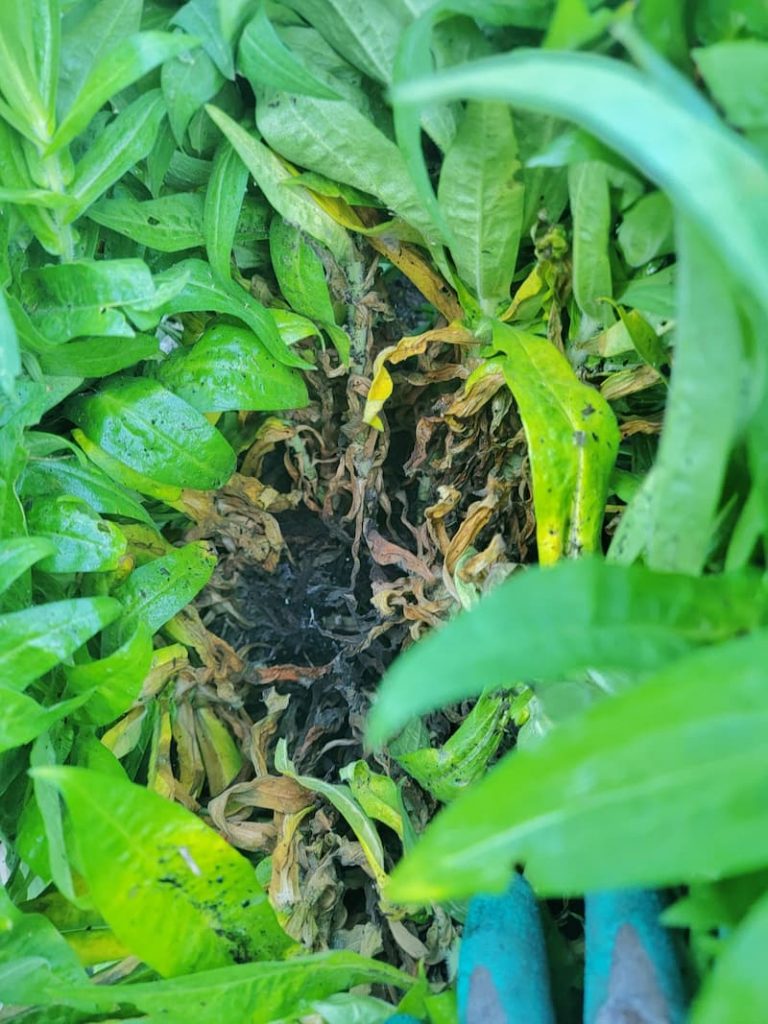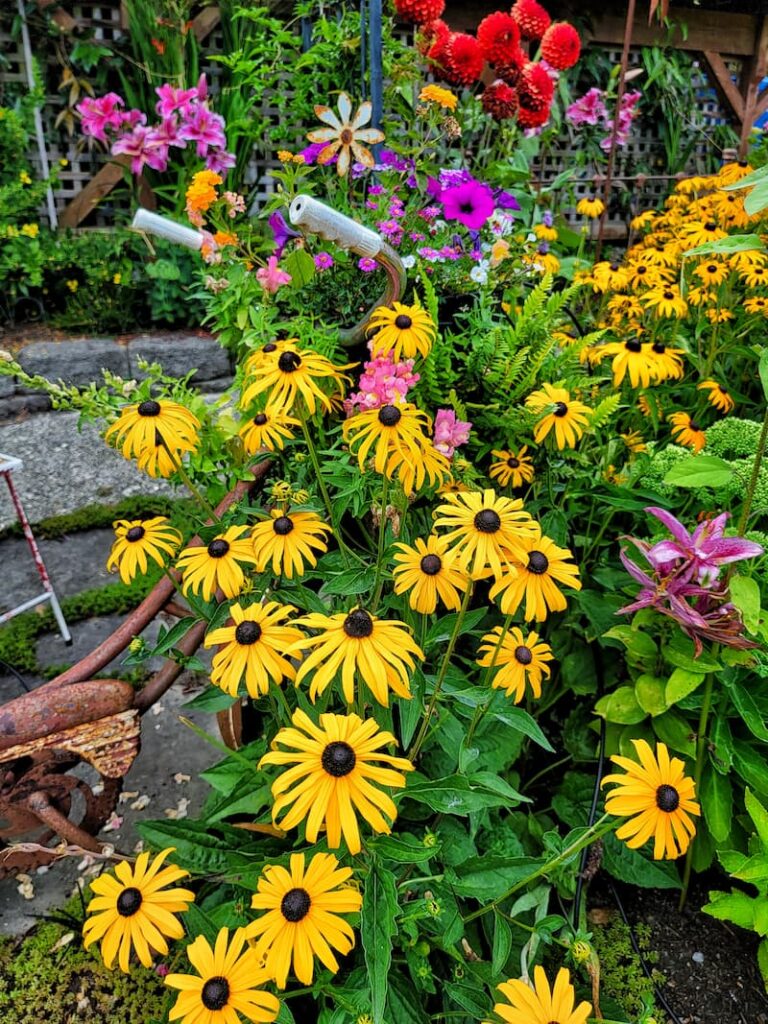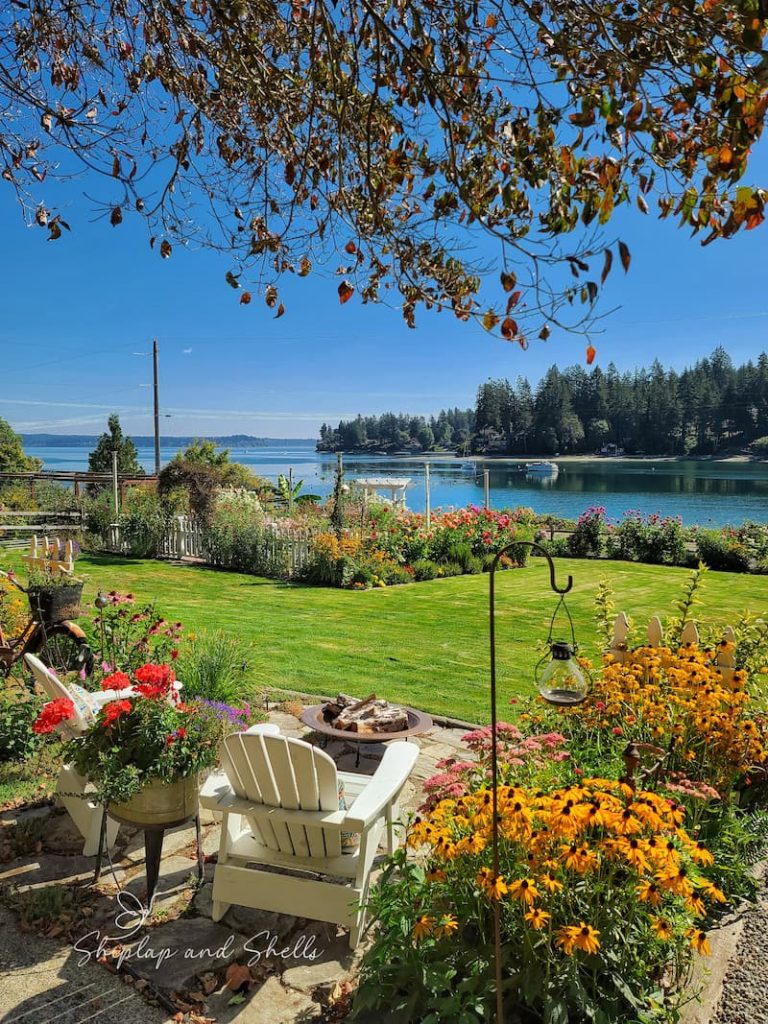September Gardening Checklist: 22 Tips and To-Dos for the Pacific Northwest
Are you starting to see signs in your garden that the fall season is approaching? September is one of those in-between months where two seasons seem to collide.
On one hand, the garden is still producing its summer bounty, but at the same time, the shorter days and cooler nights are signaling the shift to fall. Does anyone else feel a little confused this time of year?
This transitional season is busy. There’s still plenty of harvesting, deadheading, and weeding to do, along with planning and planting for what’s next. Pests and diseases seem extra determined in September, too, so keeping an eye out is more important than ever.
Read on to discover September gardening tips and things to do in your Pacific Northwest garden.

As an Amazon affiliate, I earn a commission from qualifying purchases at no additional cost to you. My blog also features other affiliate links for your convenience. Click here to read my privacy policy.
22 September Gardening Tasks for the Pacific Northwest

Here’s a complete checklist of 22 essential September gardening tips and to-dos for Pacific Northwest gardens (Zone 8b).
1. Gather the Last Summer Bounties

Harvest what’s left of your summer crops before the weather takes a turn. Pick tomatoes, peppers, green beans, cucumbers, and zucchini. Dig up potatoes once their tops die back.
For onions, stop watering when the stems turn yellow. Once the tops flop over, pull them and let them cure in a dry, airy spot.
2. Preserve Your Harvest
Don’t let those last fresh herbs go to waste. Cut healthy stems of basil, oregano, thyme, rosemary, sage, mint, lavender, chives, and parsley for drying or freezing.
You’ll be thanking yourself this winter when you can add a taste of the garden to your soups and sauces.
3. Collect Seeds from This Year’s Garden for Next Year

Save seeds from open-pollinated or heirloom flowers and vegetables to plant next year. I’ve been so glad I saved seeds from flowers that later became hard to find in catalogs.
4. Share Your Seeds
Don’t keep them all to yourself!
Sharing seeds with friends (or participating in local seed swaps) not only saves money but also helps keep local gardens diverse and pollinator-friendly.
5. Refresh Garden Containers for Fall

Tired summer annuals can look a little sad in September. Give your pots and window boxes new life with fall favorites like:
Clear out the old plants, refresh the soil, and tuck in new cool-weather color.
6. Start Fall Crops

September is a great time to sow quick-growing, cool-season vegetables. Try broccoli, peas, carrots, cauliflower, garlic, spinach, cabbage, or lettuce.
Pro tip: Row covers extend your growing season and protect tender crops from early frosts.
SHOP For Row Covers
7. Sow Cover Crops
Think ahead to spring by planting a cover crop in cleared vegetable beds.
Rye, crimson clover, vetch, and fava beans help prevent erosion and add nutrients back into the soil. I like to think of them as a cozy blanket for your garden beds.
8. Plant New Trees and Shrubs
September is ideal for planting evergreens, new trees, and other shrubs in the garden.
The soil is still warm, and the roots have enough time to establish before it starts to freeze. If the weather is warmer than usual for the month, you can wait until mid- to end-September to plant.
Plant Camellias, Crape Myrtles, and Shrub Roses for fall interest.
9. Tree and Shrub Care

Prune out any dead, diseased, or crossing branches. This not only tidies up the plant but also prevents the spread of disease and encourages healthy new growth.
10. Lawn Maintenance
Cooler weather makes September prime time for lawn fixes:
11. Soil Testing

Soil testing tells you exactly what your garden needs (and what it doesn’t). Use the results to guide fall fertilizing.
SHOP Soil Test
12. Applying Fertilizers
Balanced fertilizers contain equal parts of essential nutrients, helping with new growth for your fall plantings during the cooler months. Spread them evenly over the soil before planting to give your plants a healthy start.
Be careful not to overfeed your plants with too much nitrogen in the fall. This can make them grow too quickly, making them vulnerable to winter damage. Opt for balanced fertilizers to keep their growth steady and sturdy as the colder weather arrives.
SHOP Balanced Fertilizers
13. Organic Matter
Adding organic matter to your garden in September in the Pacific Northwest is beneficial.
Add compost or well-rotted manure to improve soil structure and feed next year’s crops.
Mulching fallen leaves can also be very beneficial to your garden. I use it to protect my dahlias and other tubers and bulbs through the winter.
14. Addressing Pests in Your September Garden

September is prime time for aphids, spider mites, and slugs in the Pacific Northwest, so keep an eye out and take action to keep them at bay.
SHOP Insecticidal Soap Spray
SHOP Sluggo
15. Control Plants with Disease

September is a very busy time of year for powdery mildew, so remember to remove any infected, diseased leaves on your garden plants immediately to keep them from spreading.
Powdery Mildew Prevention and Treatment
Remove infected leaves right away. Prevent by spacing plants for airflow and watering at the base. A baking soda spray (1 tablespoon baking soda, ½ teaspoon liquid soap, 1 gallon water) can also help.
16. Managing Weeds
Weeds don’t take a break just because it’s September.
Continue to keep up with weeds in the garden so they don’t steal water and nutrients from other plants, and so they don’t get out of control and become an even bigger chore later on.
Spread a layer of mulch around your plants to keep new weeds down. If you spot any weeds popping up, pull them by hand, making sure you get the roots.
Pull them after a rain or deep watering when the soil is soft—it makes the job so much easier.
Garden Supplies and Tools
Check out my favorite garden supplies and tools for the growing season. Whether you’re looking for potting soil or deer repellent, you’ll find what I use in my own garden.
17. Dividing and Transplanting

To keep your perennials healthy and vigorous, dig up and divide clumps that have gotten too large. Replant sections in well-prepared soil with plenty of space to grow.
Here are some great candidates for division that are more resilient in cooler weather, making it an ideal time to separate and replant their root clusters for better growth next year:
18. Deadhead Your Spent Blooms

Be sure to snip off any spent blooms on annuals and perennials throughout the fall.
Deadheading removes dead flower heads from a plant to encourage growth by putting more energy into blooms for the remainder of their growing season.
Keep annuals and perennials looking their best by snipping off faded blooms. This redirects energy into more flowers (or healthier roots) instead of seed production.
19. Order Spring Bulbs to Plant in the Fall

If you haven’t already, now’s the time to order your spring bulbs like tulips, daffodils, crocus, and hyacinths for planting later this fall. They’ll thank you with a colorful show in just a few months.
20. Keep Your Garden Hydrated
Don’t put the hose away yet. Keep watering deeply until fall rains are consistent. Dry soil heading into winter can stress plants more than cold temps.
21. Transition Outdoor Plants Inside for Fall

Before nighttime temps dip below 50°F, bring in tender plants like geraniums, fuchsias, and begonias. Give plants a refresh before moving them to a bright window by repotting if needed.
Inspect for Pests Before Bringing Plants Indoors
Rinse or wipe the plant leaves to prevent bringing aphids inside.
Easy Houseplants to Add This Season
Snake plants, pothos, and peace lilies are low-maintenance choices that brighten indoor spaces through fall and winter.
22. Start Planning Ahead for Next Year
Take notes about how your garden performed this year now, while everything is fresh in your mind.
Sketch out ideas and jot them down. If you’d like help staying organized, my digital garden planner (just $4.99) has space for mapping beds, tracking plants, and planning ahead season by season. Find out more below.
Common Questions About Gardening in September
Is September Too Late to Start a Garden?

Not at all! Quick growers like lettuce, radishes, and spinach can still give you a fall harvest in the Pacific Northwest.
Can I Plant Anything in October?
Yes! Garlic, shallots, and overwintering onions all benefit from a fall planting.
It’s always a good idea to check with local gardening resources or extension services for specific recommendations tailored to your exact location within the Pacific Northwest.
How Do I Prepare My Garden for the End of Season?
Start preparing your garden for winter by clearing out spent plants, weeding thoroughly, and adding compost or mulch as needed. Prune dead branches and consider cover crops to protect your soil.
These steps will set you up for a smooth and successful start next spring.
Final Thoughts for September Gardening

September is a month of transition, but it doesn’t mean the beauty of your garden is over. With harvesting, planting, dividing, and tidying up, there’s still so much joy to be found outdoors. Plus, every step you take now makes spring that much sweeter.
So enjoy those last blooms, keep up with the chores, and don’t forget to pause and soak it all in.
If you found this September checklist helpful, share it with a fellow Pacific Northwest gardener who’s also juggling two seasons at once.
Until next time,
Happy September Gardening!

I’m a self-taught hobby gardener. Everything I share on my blog is my opinion and what has worked for me.
MORE POSTS
For You To Enjoy
Follow Me for More Inspiration
Shop my Amazon Storefront, LTK sources, and my favorite home decor, garden, and lifestyle products. When you purchase from one of my links, I earn a small commission, which helps me continue sharing all the content you expect on my blog.
Be sure to follow me on Pinterest, Instagram, Facebook, TikTok and LIKEtoKNOW.it. Do you like gardening? Join my Facebook Gardening Tips & Tricks group.











I’d like to be able to start saving flower seeds. If you have the time, I’d love a to know how you save the seeds and where you store them. Thank you for your blog!
I always love seeing your garden. Living in the lower Midwest many plants here are starting to look “tired”, but the main harbinger of fall is the change in light. New shadows and shade during usual sunny times of the day. I try to leave my container plants out till “the end” because of the migrating hummingbirds. I need to collect seeds this year, especially the mini zinnias. Happy late summer, Kim.